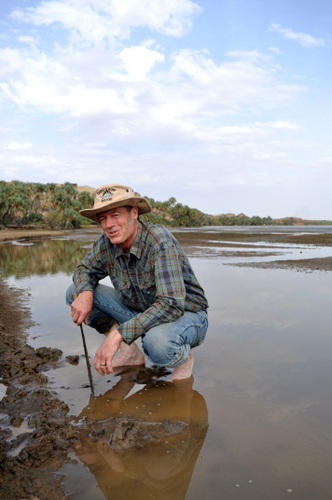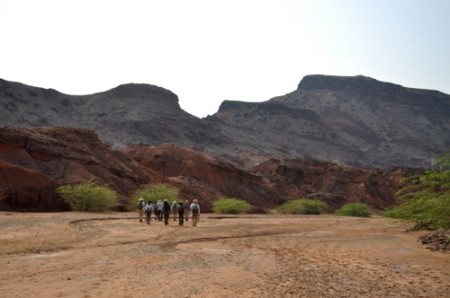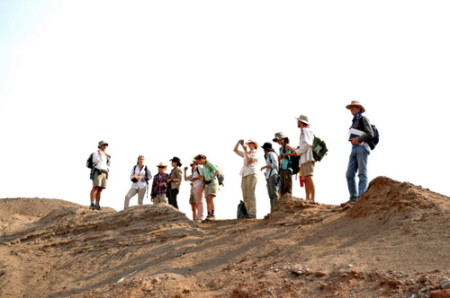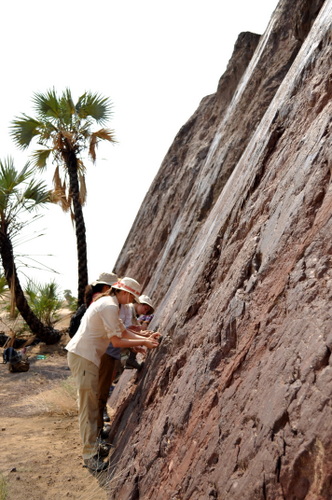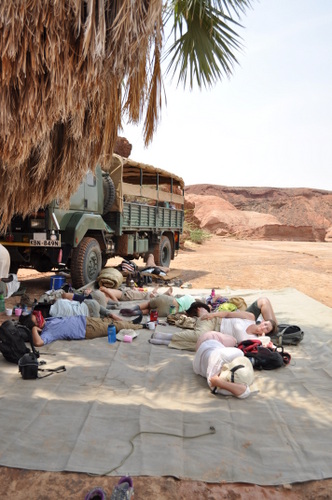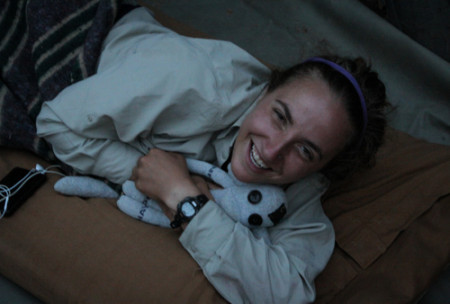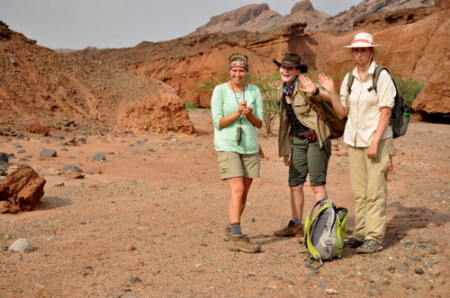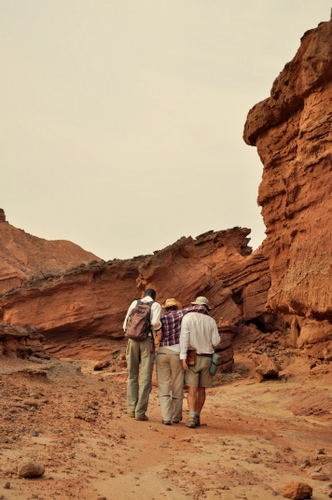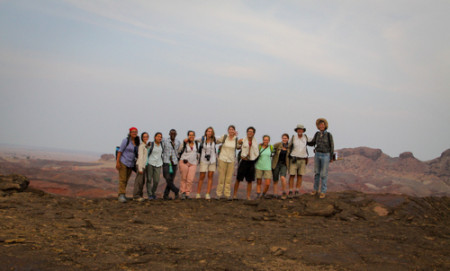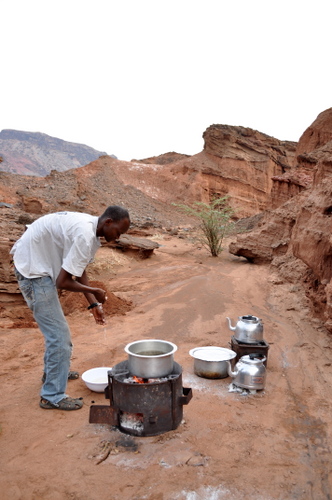On Thursday, Dr. Feibel and guest professor Dr. Bob Raynolds, took the students on a geology camping trip to Lothagam, situated a few kilometres south of the Institute.
Lothagam is an important site for geologists, palaeontologists, anthropologists and archaeologists because it is made up of deposits spanning from the Late Miocene all the way through to the Holocene. These deposits are rich with fossils and archaeological material; and while they can tell us a lot about the different plants and animals that inhabited the region over time, the deposits have been key to our understanding of the geological transformations that have occurred in the Turkana Basin as part of a dynamic rift valley system.
Trekking in Lothagam is great fun, but no easy task as it involves a lot of scrambling up and down steep slopes. All the students are experts in embodying the spirit of the mountain goat in these situations, but this time we had one minor casualty – Janina pulled a muscle in her leg as she was scrambling up a hill. Help was very close at hand, though, and she got back to camp safely in no time.
As the sun began to set the students set up their sleeping quarters under the stars – bed rolls, and mosquito nets suspended from ropes tied between the two field vehicles; and after a delicious dinner of soup, lentils, rice, and oranges, the students settled down to hear Dr. Raynolds’ bedtime stories about his many adventures in the field. It was the perfect ending to a wonderful day!

